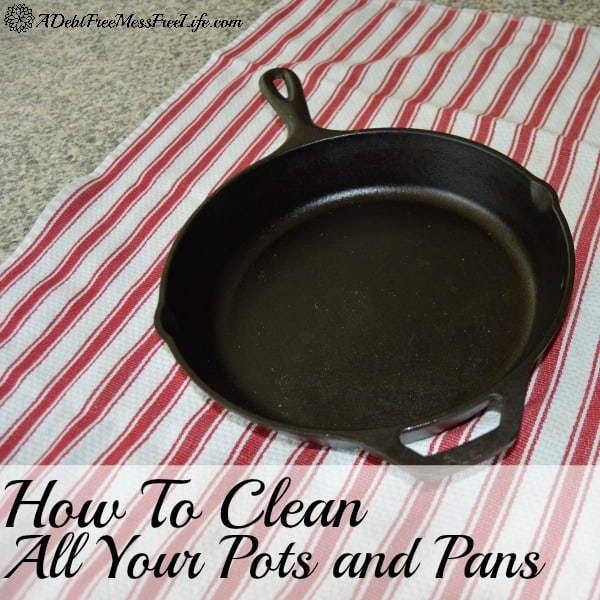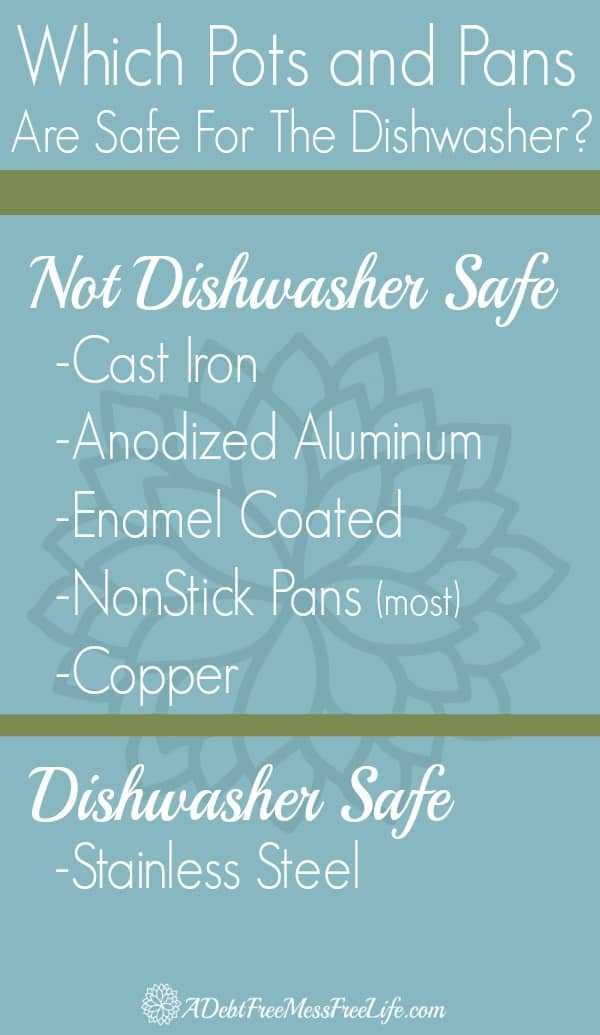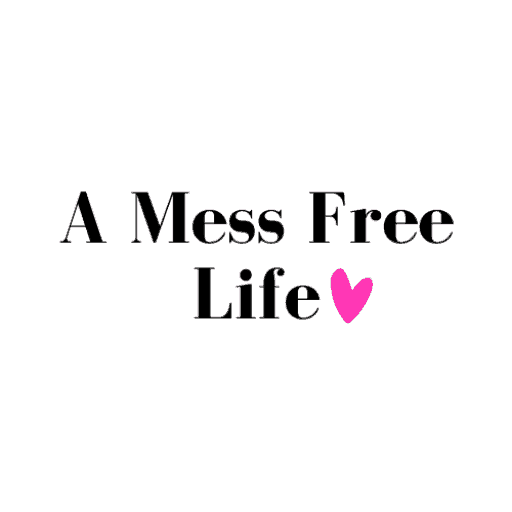A Mess Free Life may collect a share of sales or other compensation from the links on this page.
When I was growing up, we didn’t have a dishwasher.
Me and my sister – we were the dishwashers.
In the beginning, because I wasn’t tall enough I would get stuck with the task of drying the dishes and putting them away. I hated this chore.
Once I was taller, we switched, and I became the dishwasher. A task I still enjoy to this day.
That was until it came time for the pots and pans. We had two kinds: cast iron and stainless steel.
The mess, the stuck on gunk.
They were difficult to clean.
Today, there are so many different types of pots and pans on the market. Not like 50 years ago when you had only a few choices.
We have anodized aluminum, copper, cast iron, stainless steel, enamel-coated, nonstick and “green” pans! Whew.
How on earth do you clean them all?
I’ll show you how!
How To Clean Your Pots and Pans
Let’s get to the hard stuff firsts. How you handle the tough, stubborn stuck on stuff.
If you’re using a cast iron pan (I love cooking with cast iron, there’s nothing quite like it), simply pour course salt on it and scrub hard with a dish rag. Don’t worry it can take it!
For all other types of cookware, fill the pot or pan with water and a 1/4 cup of baking soda. Bring the mixture to a boil, remove from the heat and let the pot or pan soak for an hour or more. Then scrape the pan clean with a wooden spoon or rubber spatula.
If you happen to burn the pan, fill the pot or pan with cold water and two to three tablespoons of salt. Let is soak overnight. In the morning, boil the water, and the marks should disappear. If they don’t, repeat the process.
Be careful with stainless steel as the salt can pit it. Instead, try rubbing it with a dishrag that has been dipped in white vinegar to remove the burn marks.
Get It Clean
Anodized Aluminum – is cookware that has been coated with a nonreactive layer, so it’s safe to use with acidic foods like tomatoes is not dishwasher safe.
Handwash the pot or pan with mild dishwashing liquid and a light duty nylon sponge. The oily residue will cause food to stick to it so be certain it’s totally clean before you cook.
Enamel Coated – Putting this type of cookware into the dishwasher can dull its finish and cause it to chip which can then react with acidic foods.
Hand wash it with a light duty nylon sponge and mild dishwashing liquid. Dry it completely with a dish towel especially the rim where nick and scratches and thus rust are most likely.
Stainless Steel – Stainless steel pots and pans are heavy duty, durable and dishwasher safe.
If you hand wash it (and why would you) be sure to use a light duty nylon sponge and mild dishwashing liquid.
NonStick Pans – Most nonstick pans are not dishwasher safe. Hand wash them with a soft sponge and mild dishwashing liquid. Never scour them with anything abrasive as doing so can damage the nonstick layer. If the coating is scratched or peeling, throw it away as it has been compromised and can release toxic compounds.
Copper – Hand wash copper cookware as you would all other pots and pans that aren’t non-stick. The inside is usually lined with tin or stainless steel since copper reacts to acidic foods.
To clean the exterior and get it sparkling, cut a lemon in half and sprinkle with coarse salt. Works like a charm.
Cast Iron – Most cast iron products need to be seasoned before using them for the first time. Follow instructions that come with your new pan.
To clean a seasoned pan, wash it with a soft sponge and hot water only. No dish soap and do not put in the dishwasher. To prevent the pan from rusting, dry it immediately with a towel or on low heat over the stove before putting away.
Enjoy this cleaning article? Here are some of my reader favorites!
63 Things You Should Be Cleaning But Aren’t
12 Cleaning Hacks That Don’t Work & Are Just Plain Ridiculous
No More Excuses: How To Get Your Family On Board With Cleaning!


